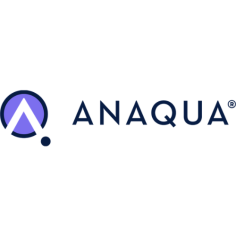Make the most of business content, regardless of where it lives
It is nice to think that all your business content lives in your repository of record. That’s why you have invested so much into these systems. However, that may not always be the case. In many organizations, content bounces between various systems throughout its lifecycle. Some content might live in a CRM like Salesforce or Dynamics. Other content might live in a collaboration platform like HighQ or Box. Whether that content makes it back to its repository of record, like an ECM or DMS, is often a mystery.
When you can’t ensure that content is returning to the repository of record, and there is too much content for your IT team to comb through, there must be a better way to make sure your employees are following governance initiatives. We are happy to inform you that there is more than one way SeeUnity can help you!
1. Integration
One of the best ways that you can ensure that content remains in its repository of record it through integration. What we mean here is the capability to surface all your important content, regardless of system, in one easy to use interface. Our integration solution allows your users to access content in the interface that best suits them. In many cases, users want to use SharePoint as their main interface. An integration would allow them to do so while surfacing content from their ECM/DMS through a window. Native ECM and DMS functionality would be kept, so your users can easily check-in/check-out, view, and even edit content from their DMS while they are using SharePoint. This keeps content securely stored in the repository of record, and allows users to interact with the interface that they prefer to use. A common use case for this is the integration of a DMS into a CRM like Salesforce or Dynamics. Instead of your users bouncing between systems to find content related to specific clients or case IDs, they would have a window into their DMS that could surface any related content. They could then update or view the content as needed without having to work within two different systems, improving workflow and user experience.
2. Synchronization
In other cases, users might be just fine working in several different applications, however, they may not always remember to save content back into their DMS or ECM, therefore throwing security or Information Governance out the window. In this case, IT can set up a back-end synchronization to ensure content gets saved back into the repository of record automatically. This would occur entirely behind the scenes without any sort of initiation by users. This allows them to work in the systems they prefer, while still maintaining IT initiatives.
Sometimes it might make sense for your users to be able to initiate synchronizations to and from their various business systems and DMS or ECM. For this use case, we would suggest a user-initiated synchronization. Empower your users to send content back and forth between their various business systems and DMS or ECM without compromising your repository of record. The most common use case for this is when client extranets and file shares are involved. Instead of completely locking down file shares, you can enable your users to sync content back into the repository of record when they are finished sharing the document with a client or other third party. Metadata and permissions mapping will ensure that only the right people can access and edit the content, which further protects your governance and security initiatives.
Your business content is important to you, and so is security. With these two different solutions, you can make the most of your content regardless of where it lives. Each of these solutions can help you streamline workflow while maintaining your Information Governance and security initiatives. It also helps keep your employees happy to either feel empowered or save them time bouncing between systems to access and action the content that is most important to them. Additionally, solutions like these foster collaboration with third parties and clients without security risks.
For more about SeeUnity solutions, feel free to inquire above or email info@seeunity.com. SeeUnity and NetDocuments will be teaming up to discuss user adoption and information governance on June 6th. Register today for the webinar!



